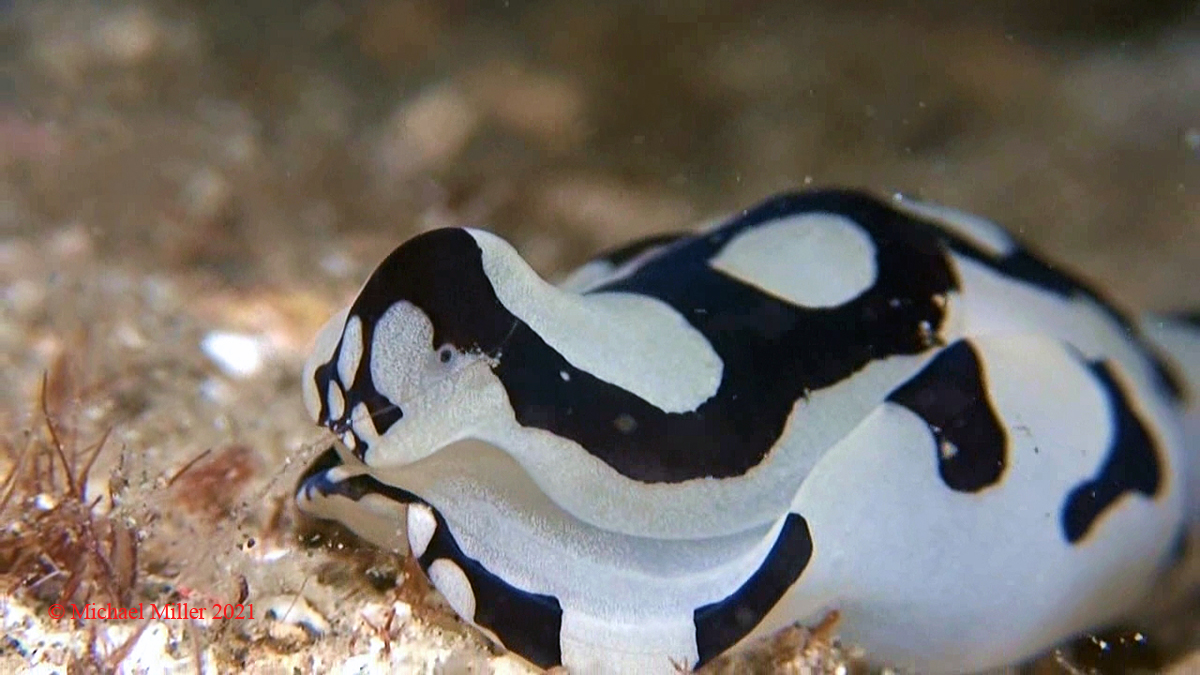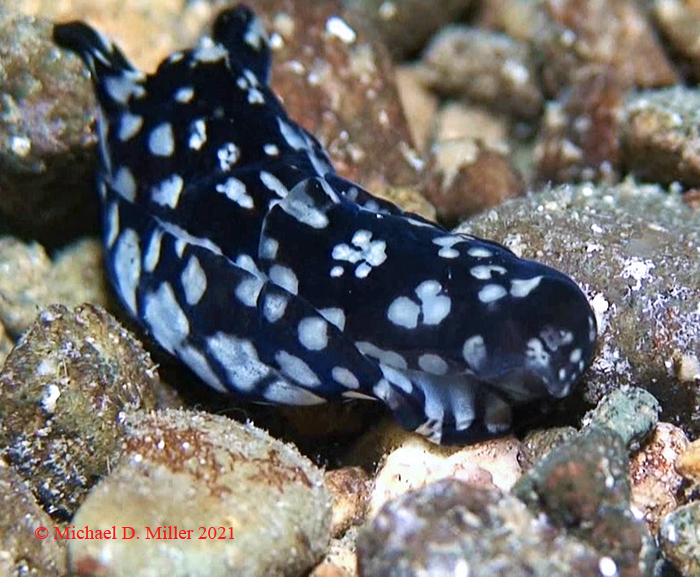 |
Philinopsis pilsbryi
Image courtesy of Michael MillerDive Site Seafari, Anilao, Batangas, Philippines
Dive Site Seafari, Anilao, Batangas, Philippines
 |
Philinopsis pilsbryi (Eliot, 1900) First and Foremost, Merry Xmas and Happy New Year to all and let's hope 2022 brings an end to the never ending Covid crisis! Dave is in Hawaii enjoying a well deserved break from BOW deadlines so you're stuck with the Webmaster this Christmas week! This story begins with a video prepared for fellow slugger Jim Black that featured critters we saw during a 2013 trip to Anilao, Batangas, Philippines. In the process of remastering the video I noticed a couple of clips that might be of interest to our readers! The images presented are screen grabs from clips taken during a night dive at Dive Site Seafari which is now generally referred to as "Basura", Spanish for trash which is more than an adequate description of the site, but does not do justice to the incredible number of sea slugs and other critters we have seen at the site thru the years!
Night time is the best time for this dive site! During a night dive back in 2013, both of the sea slugs featured in this presentation were found just off shore in 10 to 15 ft. of water where I was generally accustomed to finding them! The top image is
Philinopsis pilsbryi (Courtesy of Bill Rudman's Sea Slug Forum) is what we associate with the traditional image of Philinopsis pilsbryi.
The image to the left is thought to be a variant of Philinopsis pilsbryi. At any rate they were both photographed in close proximity that night foraging for prey (polychaete worms?).
Philinopsis pilsbryi belongs to a group of aglajids that have a long tubular proboscis. The folding of the tube creates rounded crest in the center of the head.
Another species with this bump on the head is P. gardineri.
|

Attention all you Sluggers, and you know who you are! The NSSI 2nd edition is now available in ebook PDF and book form . The hard back version will become available Nov. 1st. Both will cost $65 (individually). You will need to jump through a few hoops to get the electronic version as pdf distribution is protected by Adobe ID!! Please read the following to enable reading your electronic purchase! This new 2nd Edition is updated and reorganized, including 185 new species. Among other features, the new edition includes additional photographs of species, an identification key, and an up-to-date classification reflecting the latest evolutionary relationships. The Indo-Pacific represents the largest expanse of tropical ocean in the world, stretching from the Indian Ocean coast of southern Africa and the Red Sea to the central Pacific of the Hawaiian Islands, Easter Island and the Marquesas. This region supports the most diverse marine fauna of any place in the world for most groups of marine organisms. The nudibranchs and sea slugs are no exception to this rule; there are about 3,000 described species of these organisms in the world and at least 40% of these have been found exclusively in the Indo-Pacific tropics. This book illustrates 2,138 Indo-Pacific nudibranchs and sea slugs, including many undescribed species.
|

|
